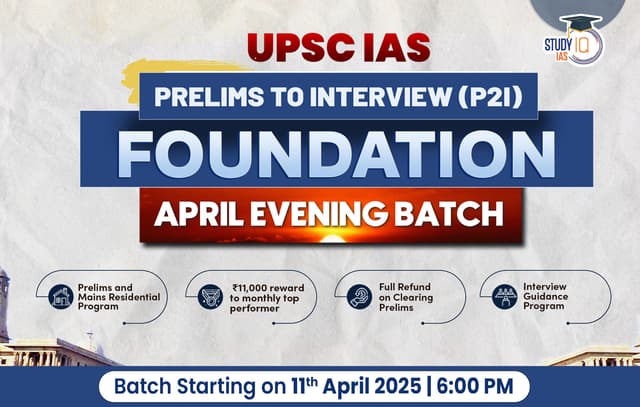Table of Contents
Context: Seventeen States have so far set aside 57,700 hectares of degraded forest land for tree plantation under the Green Credit Programme.
About Green Credit Programme
- The Green Credit Program, introduced on October 13, 2023, represents an innovative market-based mechanism designed to incentivize voluntary environmental actions across diverse sectors.
- This initiative encourages participation from various stakeholders including individuals, communities, private sector industries, and companies.
- GCP was launched by the Union Ministry of Environment, Forest and Climate Change.
- It is an innovative market-based mechanism designed to incentivize voluntary environmental actions across various sectors.
Key Objectives of the Green Credit Programme
- Enhancing Forest and Tree Cover: GCP aims to increase India’s forest and tree cover by encouraging afforestation and reforestation activities.
- Establishing a Dynamic Land Bank: The programme plans to create an inventory of degraded forest lands suitable for plantation, accessible through a dedicated web portal.
- Issuance of Green Credits: Participants engaging in approved environmental activities receive Green Credits, which serve as incentives and can be traded on a designated platform.
- The Indian Council of Forestry Research and Education (ICFRE) administers the programme, overseeing the verification and issuance of these credits.
Key Focus Areas
The GCP, in its initial phase, prioritizes two critical activities:
- Water Conservation: Promoting practices aimed at preserving and efficiently utilizing water resources.
- Afforestation: Encouraging initiatives for the planting and nurturing of trees to combat deforestation and enhance green cover.
Governance Framework and Implementation
- Inter-ministerial Steering Committee: A dedicated committee oversees the governance framework of the GCP.
- Role of ICFRE: The Indian Council of Forestry Research and Education (ICFRE) plays a pivotal role as the GCP Administrator, responsible for program implementation, management, monitoring, and operation.
Changes Introduced
- The Environment Ministry has changed the earlier requirement of a minimum of 1,100 trees per hectare to qualify as a reforested landscape and left it to States to specify them.
- Companies would not be able to offset all their obligations under compensatory afforestation using green credits but could claim a portion of it.
Methodologies and Processes
- Draft Methodologies: Detailed methodologies for awarding Green Credits have been developed and will undergo stakeholder consultation.
- Benchmarking: These methodologies establish benchmarks for each activity/process to ensure environmental impact and fungibility across sectors.
- Digital Platform: A user-friendly digital platform streamlines project registration, verification, and issuance of Green Credits.
- Green Credit Registry and Trading Platform: ICFRE, in collaboration with experts, is developing a registry and trading platform to facilitate the registration and trading of Green Credits.
Obtaining Green Credits
To obtain Green Credits, individuals and entities must:
- Register their activities through the central government’s dedicated app/website.
- Undergo verification by the Administrator, with self-verification available for small projects.
- Upon verification, receive a Green Credit certificate, tradable on the Green Credit platform.
- These credits can be claimed by the financing organisation and used in two ways:
- Either using it to comply with existing forest laws that require organisations, which divert forest land for non-forestry purposes, to recompense by providing an equivalent amount of land elsewhere.
- Or be used for reporting under environmental, social and governance leadership norms or to meet corporate social responsibility requirements.
Green Credit Programme Challenges and Concerns
- Critics raise concerns about the simplistic approach of measuring success by tree count, which overlooks ecological complexities and risks creating “green deserts.”
- The methodology for generating green credits is questioned for its environmental soundness and potential for exploitation.
- Pressure on “degraded” lands for afforestation may harm existing ecosystems and biodiversity
Conclusion
- The GCP holds potential as a catalyst for environmental conservation and restoration.
- Success requires a nuanced understanding of ecological dynamics and a commitment to holistic restoration practices.
- By embracing biodiversity-based afforestation, leveraging technology, and fostering transparency and collaboration, we can realize a greener, more sustainable future.


 Bioluminescent Beaches - Kavaru
Bioluminescent Beaches - Kavaru
 Topological Materials: The Future of Qua...
Topological Materials: The Future of Qua...
 China’s Deep Sea Station in South Chin...
China’s Deep Sea Station in South Chin...





















